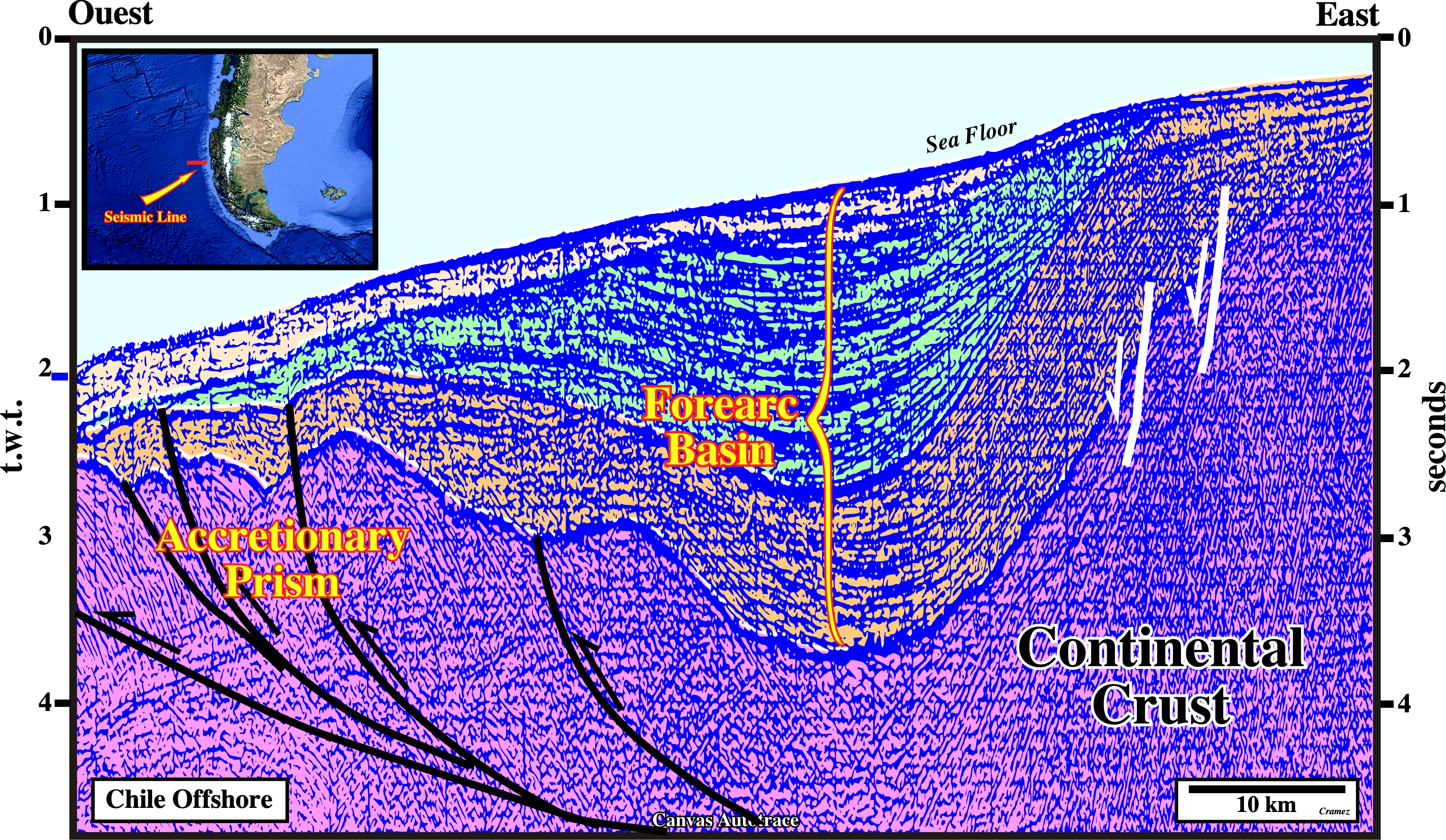

Chile Offshore
Madre de Dios Geographic Basin

In south Chile offshore, in association with the subduction of the Antarctic lithospheric plate, as illustrated above, the principal Chilean forearc basins, from South to North, are: (i) Diego Ramirez geographic basin ; (ii) Madre de Dios geographic basin and (iii) Golfo de Penas geographic basin. These forearc basins are large sediments repositories that develop in the overriding lithospheric plate South America convergent margin as a direct response to subduction of the Antarctic plate. They part of the volcanic "arc-forearc basin-accretionary prism" triad that defines the geological configuration of the overriding lithospheric plate plate of the southern South America convergent margin. In fact, all these basins can be explained by the conventional geological model of a B-subduction zone, in which : (i) An oceanic lithospheric plate plunges under a continental plate (Andean-type margin) or under an oceanic plate (Marianne-type margin) ; (ii) The basaltic slab, as well as, the sedimentary cover, sink into the mantle and heat up ; (iii) When it reaches the melting temperature of the mixture (basalt + water + sediment), it melts, giving rise to volcanic magma ; (iv) The volcanic magma, less dense than the mantle that surrounds it, will tend to rise to the surface and give rise to volcanoes explaining one of the characteristics of B-subduction zones, i.e., the the appearance of volcanoes at a variable distance from the oceanic trench ; (v) The distance between the volcanic arc and the oceanic trench is a function of the subduction angle (angle between the plunging plate and the Earth's surface), which depends mainly on the : (a) Thermal state, the younger the plunging plate, the lighter it is and, therefore, the smaller the subduction angle (the resistance to sinking is very high), (b) Rheology of neighboring regions (if the neighboring oceanic lithosphere has a low density, it can, when it is sinking, induce distensive deformations and reduce the subduction angle), (c) Speed of the overriding plate (if the relative speed of the two converging plates is low, the vertical component of the depression at all times to become preponderant and make the subduction angle high) ; (vi) The speed of the overriding plate (when the overriding plate moves towards the trench, the subduction angle is low, when the overriding plate does not move towards the oceanic trench, the subduction angle will be greater). In an Andean-type margin : 1) The volcanic arc is characterized by a sub-aerial volcanic chain with an important topography, 2) The volcanism is very variable, with predominance of basalt, 3) Calco-alkaline, andesite and rhyolithic rocks are frequent, 4) The volcanism is localized in the region of the compression arc or in the region where the continental crust is thick, 5) Significant accretion complexes are often associated with this type of margin, 6) Strike-slip faults parallel to the oceanic trench are very frequent. Finally, as illustrated above, In an Andean-type margin, from the oceanic trench continentward, the main geological features are : A) Oceanic trench ; B) Accretionary prism ; C) Forearc basin ; D) Volcanic arc ; E) Backarc basin and F) Continental lithosphere.

On this tentative geological interpretation of a Canvas autotrace of an old seismic line of the Madre de Dios geographic basin, the forearc basin is, easily, recognized above and continentward of the accretionary wedge, as illustrated on the geological model proposed above.
Send E-mails to carlos.cramez@bluewin.ch with comments and suggestions to improve this atlas.
Copyright © 2001 CCramez
Last update:
2022